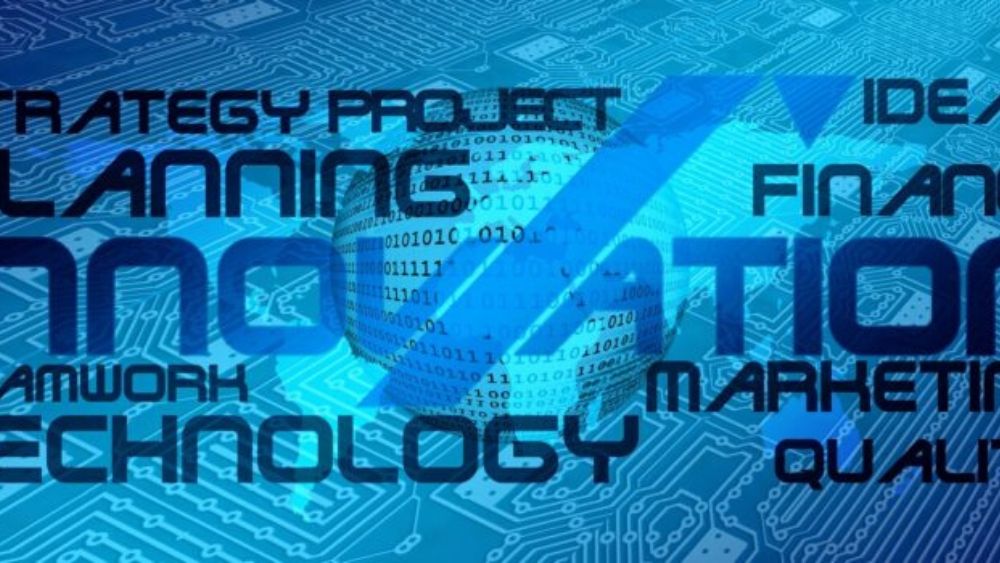Insights
INSIGHTS
All Topics
My Account
What does it mean to be an innovative charity?
12 Dec 2019by Aidan Paterson
Innovation could be the difference between organisations that advance and those that get left behind. So, what does it mean to be an innovative charity?
Innovation can be scary and challenging. Implementing innovative ideas can be a process of trial and error - and the error part of that is often daunting. Organisations may feel overwhelmed: not knowing where to start, charity leaders can feel trapped by a feeling they will need to do everything in order to succeed. A fear of failure can also be off-putting. But failure is a necessary part of the process. There is no ’off-the-peg’ way of approaching innovation. You can only make progress by trying things, and even failure can enable you to evolve and refine your strategy. Whether it’s RNLI accepting Bitcoin donations as far back as 2014 or Zero Carbon World using tech to help them drive carbon neutrality, being an innovative charity means challenging invisible orthodoxies - not asking ’why?’, but rather asking ’why not?’ The trouble is innovation can feel like an abstract, buzzwordy, potentially expensive concept to those just starting out. It may not seem as important as competing priorities with more immediately concrete implications. But digital technology will only continue to advance, and organisations that do not innovate risk being left behind. How can organisations make these changes?
Three Pillars of Innovation
There are three core components of innovation: 1.) Data - Without the right insights from strategic data analysis, there is no framework for innovation. All the tech in the world will be of little use if it isn’t pointed in the right direction. An innovative data analysis strategy will allow you to get to know your supporters and beneficiaries with pinpoint accuracy. This information can be vital in shaping everything you do - from implementing service delivery to making sure that your core values are aligned with those of your supporter base. 2.) Talent - Without the right, people, skills and clear objectives to drive transformation, no organisation can fully establish an innovative way of working. Our Digital Fundraising Day webinar in association with Trillium highlighted the importance of people over platform and making digital transformation work for the needs of your organisation. 3.) Trust - Without trust, communication closes down. Collaboration is suppressed. The kind of outside-the-box thinking that drives innovation is stifled. No organisation can adapt without the confidence of its people. Trust must be established - both in the process of innovation and in the results and changes that innovation can yield. This can be established through a combination of change management and securing buy-in for innovation throughout your organisation.
Big Data, Big Ideas
Many organisations express a desire to become more ’data-driven.’ Whether their larger goal is to achieve digital transformation, cater to their supporters or beneficiaries in a more targeted way, or integrate AI into their digital work, embracing and successfully managing data in all its forms is a prerequisite. In order to do so, data must be placed at the forefront of company-wide thinking and strategy, with decisions and changes being governed by learnings gleaned from data analysis. You may collect a lot of data on service users, supporters and donors, but face challenges around how to use it to its full potential. A cogent data strategy can help turn high volumes of data generated through day-to-day operations into the kind of data that can be used to help your organisation to achieve its mission. The Welcome Centreused AI techniques and data to identify beneficiaries who were likely to need further support from their first point of interaction with the charity.
Creating an innovative culture
58% of executives cite insufficient organisational alignment or cultural resistance as the biggest barrier to business adoption of data-driven analytics. Innovation must be embraced at all levels of a company’s culture. Status quos must be challenged, embedded competencies and assets must be leveraged, and people must feel comfortable and supported enough to think outside of the box.People at all levels need to take ownership over an innovative way of working if an organisation is going to optimise the rewards of acting and thinking differently. Tools, templates and processes are required to roll out and plan, but you need a leadership and culture that is willing to get on board with innovation. For that to happen, it’s important to foster an innovative workplace culture that invites collaboration. Open-plan workspace, remotely accessible content libraries and brainstorming sessions are just some working methods that encourage collaborative thinking.
Change Management
There are problems that need to be addressed before innovation can be fully embraced within an organisation. On one hand, there may be a lack of understanding or confidence in new procedures. On the other, there may be unrealistically high expectations. These obstacles are surmountable. An iterative approach, where it is understood that development will happen organically and over time, is crucial. A process of trial and error is necessary to some extent. The acceptance of, and preparation for, initial failure is a necessary part of the process, as it will provide your organisation with invaluable lessons.
Securing Buy-In
It’s important to make sure that people throughout your organisation are on board with any innovation campaigns you are trying to implement. You may initially have trouble demonstrating the value of an investment. This can be counteracted by starting small, gathering data and using it to demonstrate ROI before scaling up operations. Poor foundations lead to poor results. Good underlying systems will have to be built upon insights drawn from data analysis and brought in line with your organisation’s values before innovation can take place.
Don’t Be Scared of Failure - Embrace the Lessons it Brings
It’s easy to be disheartened, particularly if early attempts to innovate don’t take off. Unfortunately, there is no ’one-size-fits-all’ method of approaching innovation. But making mistakes can provide you with vital lessons. You will need the right strategy for your organisation’s particular goals. No-one can provide this blueprint for you. But by trying things that don’t succeed you will gain valuable insights about your supporters and service users that you would not otherwise have. Start small in order to prevent untenable losses. Draw conclusions from insights gleaned from data analysis. Reassess and approach the campaign from a new perspective. Once your results are in line with your aims you can dedicate more resources to scale up operations.
Innovation Challenge
Trillium deliver digital transformation for charity and not-for-profit organisations. By bringing together strategy, digital and CRM, they transform user experience, with a focus on acquisition, retention and engagement. Their CRM and website solutions provide you with the insights and tools to develop innovative fundraising approaches, connect with supporters and positively manage all your relationships, donor and beyond. Trillium are launching an ’Innovation Challenge’. You can enter by telling them your challenge, in order to win Dec days of consultancy and development, with them delivering proof of concept for innovation.
More on this topic
Recommended Products
06 Feb 2025by Ioan Marc Jones
An A-Z glossary of fundraising terms and definitions
Our Events
Charity Digital Academy
Our courses aim, in just three hours, to enhance soft skills and hard skills, boost your knowledge of finance and artificial intelligence, and supercharge your digital capabilities. Check out some of the incredible options by clicking here.















